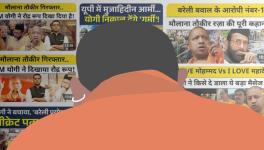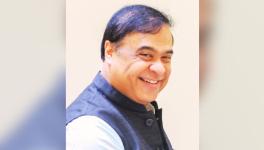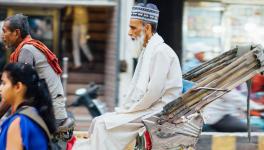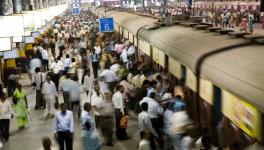Why BJP’s Social Engineering is Under Pressure in Uttar Pradesh
The Bharatiya Janata Party’s refusal to conduct a caste-based census has stressed the party’s strategy of social engineering, which is a term describing the coming together of castes with conflicting interests under the umbrella of Hindutva. The BJP’s refusal has created an opportunity for Samajwadi Party leader Akhilesh Yadav. Six months before Uttar Pradesh elects a new State Assembly, he can woo back to his party the subgroups comprising the Other Backward Classes that began deserting him since the 2014 Lok Sabha election.
An aspect of the BJP’s social engineering in Uttar Pradesh was its campaign that Samajwadi Party leaders, Mulayam Singh Yadav and Akhilesh Yadav, have promoted the interests of their caste over those of other OBC subgroups, particularly the most backward among them. The corollary of this campaign was that non-Yadav OBCs could hope for a fair deal only under the BJP. That this criticism struck a chord was evident from the post-poll surveys of the Centre for the Study of Developing Studies, which showed the BJP consistently polling, from 2014 onwards, the biggest slice of non-Yadav OBC votes.
Akhilesh referred to the BJP’s past campaign during a meeting of the Mahan Dal, where he was the chief guest earlier this week. He said, “The BJP says Yadavs are taking all the resources. Sometimes they say that we have snatched away what was yours. You and I are backwards… Samajwadi Party is a party of the backwards and demands the rights for all its people.” The Mahan Dal has a base among the most backward classes of Maurya-Shakya-Kushwaha-Saini communities.
Yadav then said the BJP would never conduct a caste census. It would not do so because the party, like the Congress earlier, knows “who are more in numbers.” The word “who” here is a reference to OBCs. And they “are more in numbers” than the upper castes, a comparison Akhilesh did not explicitly make. Why should this demographic reality have the BJP turn down the demand for a caste census?
Who’s afraid of caste census?
Herein comes a bit of history. The last caste-based census was conducted in 1931. The Mandal Commission extrapolated from the 1931 data to estimate the OBC population to be 52% of India’s population. The commission, taking into account several judicial orders mandating a cap of 50% on reservation, recommended a 27% quota for the OBCs in government jobs, as 22.5% reservation already existed for the Scheduled Castes and the Scheduled Tribes.
There has always been a feeling among the OBCs that their population has grown far more than 52% since 1931. A new caste census is therefore required, they argue. In 2011, a Socio-Economic Caste Census was carried out. Its population data were, however, not released. OBC leaders believe the data were not released because their population was likely reported to be more than 52%. They think that triggered fear among the socially advanced groups, largely the upper castes, that the 27% reservation would be scaled up and lead to a simultaneous shrinking of the general category, where the upper castes secure jobs far beyond their population percentage.
OBC leaders have argued that it is unfair to grant 27% to communities likely to be far more than 52% of the population. Only a caste census can verify this feeling or assumption. The demand has grown more strident ever since the Modi government removed the 50% cap in order to grant 10% reservation to the Economically Weaker Sections of socially advanced groups in 2019. Under the rules framed, the EWS includes close to 95% of the socially advanced groups—and not the ‘poor’ per se.
OBC leaders ask: If the sanctity of the 50% cap on reservations is violated to benefit the already privileged upper castes, why cannot the percentage of reservation for the OBCs be commensurate with their population? They answer that the BJP represents the interests of the upper castes, that it wants the votes of OBC subgroups but does not want to enlarge their reservation pie, as it can only be at the expense of socially advanced groups.
Divide OBCs, rule over them
Yet the BJP is required to return the favour of numerically small and marginalised castes, categorised as the most backward classes, overwhelmingly voting for it in north India. The only way out for the BJP to satisfy them is to split the OBCs into different categories and allocate each a portion of the 27% pie by dividing it, a process called subcategorisation, which the Justice G Rohini Commission has been working on over the last three years.
Media reports say the OBCs are likely to be split into four groups—1, 2, 3 and 4—and the 27% divided into 2, 6, 9 and 10%. Thus, 2% of government jobs would get exclusively reserved for Group 1. This Group would comprise OBC subgroups largely underrepresented in the government. By contrast, the 10% reservation would be for Group 4, expected to consist of dominant castes such as Yadav, Kurmi, Jat, Thevar, Ezhava, Vokkaliga, etc. The Rohini Commission has found that 25% of more than 2,663 subgroups on the central list of OBCs have bagged 97% of jobs and seats reserved for them.
On the face of it, subcategorisation is a fair way to distribute the reservation pie. But doubts have been expressed over the methodology of the Rohini Commission, as it has merely calculated which subgroup has what percentage of central government jobs. It has not linked jobs a subgroup has secured to its population. This can warp the social reality.
For instance, assume Caste X has a population of 10 lakh and accounts for 10% of jobs reserved for the OBCs, and Caste Y with a population of one lakh has just 1% of reserved jobs. If we go by job data, it would seem that Caste X is better placed than Caste Y. But take their populations into account and it becomes obvious X and Y are on par.
The above example is one more argument in favour of a caste census.
Divide and rule, UP style
The Rohini Commission will subcategorise only central government jobs, not those under state governments. Nine states have subcategorised the OBCs—Andhra Pradesh, Bihar, Tamil Nadu, Puducherry, Karnataka, Haryana, Jharkhand, West Bengal and Maharashtra.
Uttar Pradesh has attempted subcategorisation twice. In June 2001, when Rajnath Singh was the chief minister, a social justice committee under Hukum Singh, a BJP leader, was asked to redistribute reservations among OBC and SC subgroups. It carried out rapid population surveys to estimate the population of each subgroup and the jobs it had. For instance, it said the Yadav constituted 19% of Uttar Pradesh’s OBC population—but had 33% of jobs reserved in the OBC category. The Kurmi comprised 7.46% of the OBC population and had nearly 13% of jobs.
Upholding the principle that each OBC subgroup should have jobs in proportion to its population, the committee split the Other Backward Classes into backward, more backward and most backward classes. Only one caste was slotted under the backward category—Yadav—and assigned 5% reservation. Eight castes, including Jat, Kurmi, Lodh and Sonar, were declared more backward and allocated 9% reservation. In contrast, 70 castes were classified as most backward and given 14% reservation.
Even then, there were doubts about the committee’s agenda, as a BJP leader headed it. The population of each OBC subgroup was also an estimate prepared rather hastily. However, the committee’s report was not implemented as Rajnath Singh demitted office in March 2002.
Nevertheless, the report enabled the BJP to fan the campaign that the Yadavs had cornered the benefits of OBC reservation. The campaign acquired a compelling tone during the 2012-17 chief ministership of Akhilesh Yadav. He was accused of using power to favour his own caste group over other OBC subgroups which had voted for the Samajwadi Party.
The BJP began to reap a rich harvest of OBC votes from 2014. For instance, the post-poll survey of the Centre for the Studies of Developing Societies showed 77% of Jats, 53% of Kurmis and 60% of Other OBCs (a poll category formed by excluding Jats, Yadavs and Kurmis.) In 2019, 91% of Jats, 80% of Kurmis and 72% of Other OBCs voted for the BJP.
It is time for the BJP to show what it can do for non-Yadav OBCs, particularly the most backward classes.
Boomerang effect
In May 2018, a year before the national poll, Chief Minister Adityanath appointed a social justice committee under retired Allahabad High Court judge Raghavendra Kumar. His brief was to rationalise the reservation structure in Uttar Pradesh.
The Kumar committee clubbed the Yadav with Jat, Kurmi, Sonar and a few small castes in the backward category and assigned it 7% reservation. The more backward class included the Gujjars, Kushwaha/Maurya/Shakya, Prajapatis, Gaderias, Telis, Lodhs, and got allocated 11% reservation. The remaining 9% of the OBC quota went to the most backward class that includes Mallah/Nishad, Rajbhar, Kashyap, etc.
The Kumar report was not released before the polls, but the portion pertaining to redistribution of the reservation pie got leaked to the press. The rationalised structure is yet to get implemented.
One possible reason why the report has not been implemented is that no government, including that of Adityanath, can hope to survive or return to power by alienating three numerically dominant Yadav, Jat and Kurmi castes that hold considerable land. These communities are bound to feel miffed if the quantum of reserved jobs for which they can compete suddenly dips from 27% to 7%. On top of it, Kurmis are now big-time supporters of the BJP, as is also true of Jats, even though the three new farm laws have turned them against the Modi and Adityanath governments.
The Adityanath government’s dilly-dallying on implementing the Kumar committee report is why parties like Mahan Dal and the Suheldev Bharatiya Samaj Party, which represent the interests of some subgroups comprising the most backward classes, have turned hostile to the BJP. It is hard to tell whether theirs is a pressure tactic. Or whether they will sing another tune should Adityanath risk implementing the Kumar Committee recommendations, perhaps after tinkering with them.
Yet, the lengthy debate on subcategorisation seems to have cemented the notion of proportionality in the popular consciousness. That is to say, the idea that a given social group should have government jobs in proportion to its share in the population. The ambit of the debate is no longer confined to jobs reserved for OBCs. It has been extended to all jobs, whether in the reserved or open category, thanks to growing inter-group and intra-group inequalities as economic opportunities shrink.
At the nub of this debate are two questions: Should the upper castes, far less numerous than other categories, corner the lion’s share of government jobs, especially given the number of government jobs are shrinking every year, and the private sector is not constitutionally mandated to provide reservation? Would not the most backward classes stand to gain more when the 27% OBC reservation increases in proportion to the population of this category than through subcategorisation?
It is precisely why Akhilesh Yadav, like other political parties with a solid base among the OBCs, demand a caste census. It facilitates Yadav’s attempts to woo back the most backward classes. Whether or not he succeeds, the BJP’s social engineering has come under stress and will likely unravel should the party fail to win Uttar Pradesh next year.
Ajaz Ashraf is an independent journalist. Vignesh Karthik KR is a doctoral researcher at King’s India Institute, King’s College London. The views are personal.
Get the latest reports & analysis with people's perspective on Protests, movements & deep analytical videos, discussions of the current affairs in your Telegram app. Subscribe to NewsClick's Telegram channel & get Real-Time updates on stories, as they get published on our website.
























